How to set your caravan's noseweight
Setting your caravan's noseweight after loading is crucial as it plays a significant part in ensuring you have a well-balanced and stable outfit. If you're new to caravanning in 2025 or just need a refresh, find out below how to set your noseweight for a successful tow.
Nose What?
Noseweight is the weight or downward force from the caravan’s hitch to the tow car’s tow ball, and, thankfully, it’s a quick and easy thing to check.
You’ll need the following to check the noseweight:
- The tow vehicle’s noseweight limit. You can find this in your handbook. For example, my tow vehicle has a noseweight limit of 100kg (see first photo below)
- The tow bar’s limit. You can find this in the accompanying documentation on the plate attached to the tow bar. My tow bar limit is 150kg (see second photo below)
- The caravan chassis limit. This is the ‘S’ number stamped on the AL-KO hitch. My caravan has a chassis limit of 150kg (see third photo below)
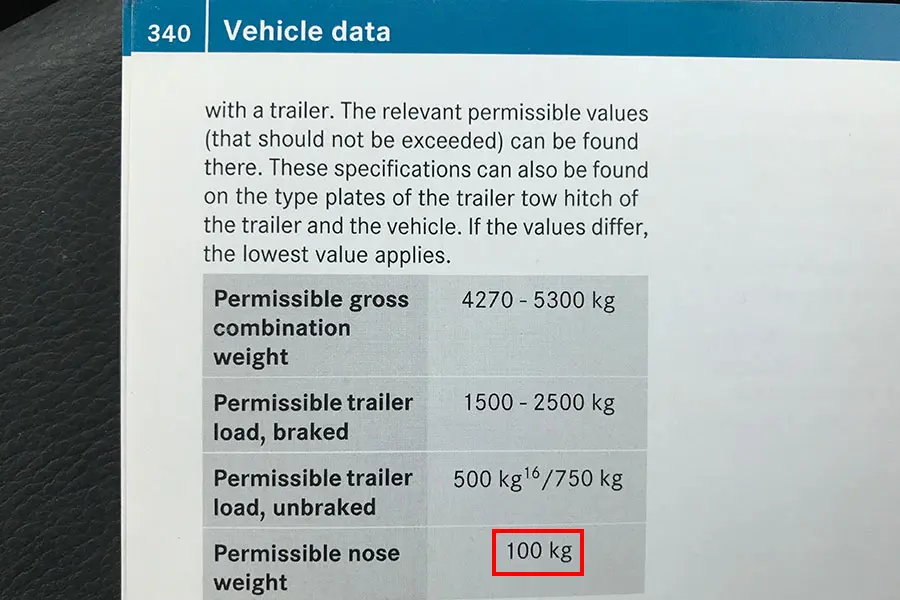
An example of the noseweight limit in a tow vehicle handbook
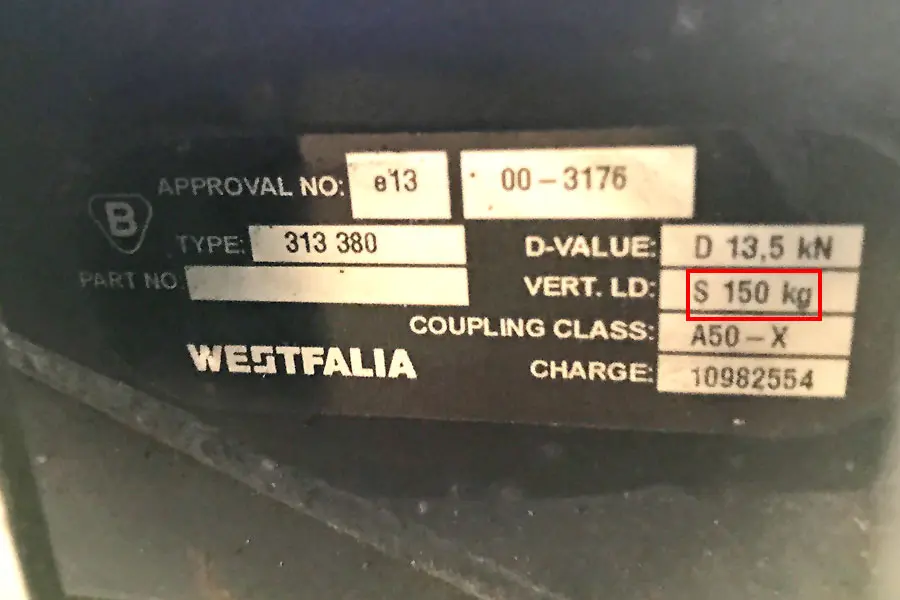
An example of the tow bar limit printed on the plate attached to the tow bar
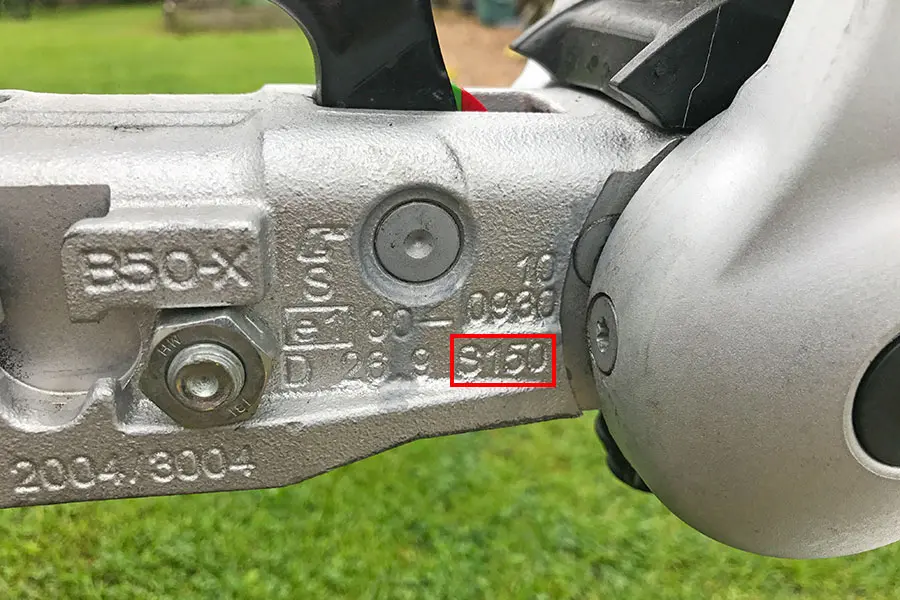
An example of the caravan chassis limit stamped onto the AL-KO hitch
How heavy is your caravan?
Next, we move to the caravan’s MTPLM (its fully loaded weight), which can be found on a sticker on the side of your caravan or in the handbook.
My caravan’s MTPLM is shown in this picture:
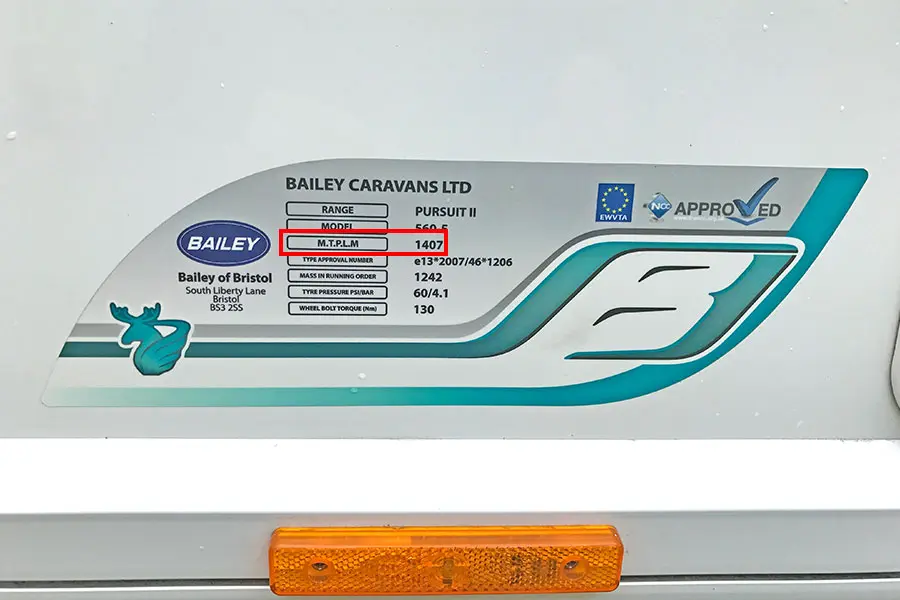
The MTPLM marked on the weight plate on the caravan side
The ideal noseweight is between 5% and 7% of this figure, so mine would be between 70kg and 98kg. Personally, I like my noseweight to be heavier, so I tend to set mine around 90kg to 95kg, which is within my tow vehicle’s 100kg limit.
How to measure a caravan's noseweight
- With your caravan loaded, place a noseweight gauge under the hitch and raise the jockey wheel until the noseweight gauge takes all the hitch’s downward weight.
- If you haven’t got a noseweight gauge, bathroom scales and a piece of wood cut to length make an ideal substitute. If you’re using the scales-and-piece-of-wood option, try to ensure that the wood is the correct length to keep the caravan relatively level, or you’ll get an incorrect figure.
- If the noseweight is too heavy, move floor-mounted luggage towards the rear and check again. Do the reverse if the noseweight is too light.
- Due to a possible pendulum effect, avoid moving heavy items more than 2ft (60cm) either side of the axle.
- If this isn’t possible, time spent rearranging heavier items is well spent and will make for an enjoyable and safer tow.
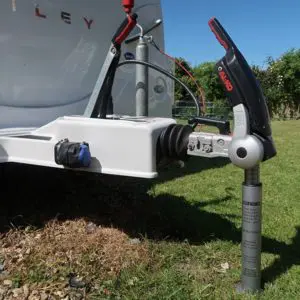
Measuring noseweight with a noseweight gauge
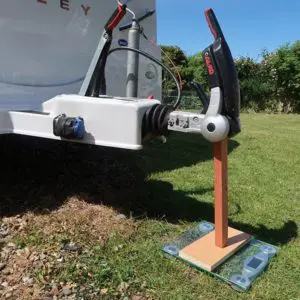
Measuring noseweight with bathroom scales
Jump to:
- Beginners Guide to Caravanning – Homepage
- How to load your caravan
- How to set your caravan’s noseweight
- How to hitch up your caravan
- How to tow and reverse your caravan
- Arriving on site: How to level your caravan
- Arriving on site: Electrical system
- Arriving on site: Gas system
- Arriving on site: Water system
- Arriving on site: How to set up your Alde or Truma heating system
- Arriving on site: Toilet cassette
- Arriving on site: Fridge
- Arriving on site: Hob, oven and grill
- Arriving on site: How to adjust your caravan’s TV aerial
- Arriving on site: How to secure your caravan
- Caravan Weight Plate Upgrade: How to increase your caravan’s payload
- Glossary
Previous
How to load your caravan
Next
How to hitch up your caravan
{{tooltipsMethod}}